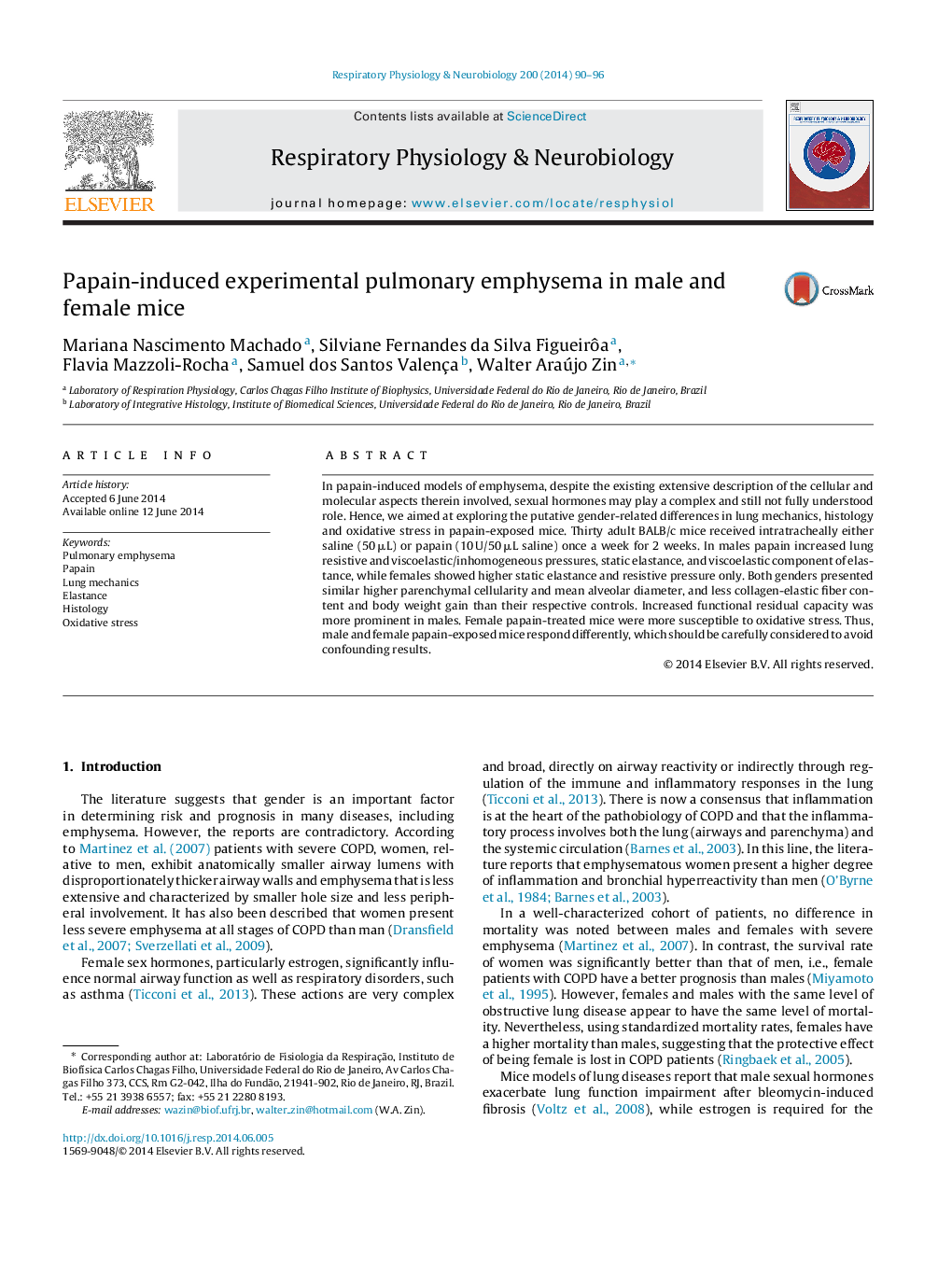| Article ID | Journal | Published Year | Pages | File Type |
|---|---|---|---|---|
| 2847001 | Respiratory Physiology & Neurobiology | 2014 | 7 Pages |
•Papain-induced lung injury disclosed male and female differences in BALB/c mice.•Treated mice showed lung mechanical harm, oxidative stress, larger alveoli and FRC.•Treated mice had more inflammatory cells and reduced collagen and elastic fibers.•Treated males showed larger lung mechanical harm and FRC than females.•Treated females were more susceptible to oxidative stress than males.
In papain-induced models of emphysema, despite the existing extensive description of the cellular and molecular aspects therein involved, sexual hormones may play a complex and still not fully understood role. Hence, we aimed at exploring the putative gender-related differences in lung mechanics, histology and oxidative stress in papain-exposed mice. Thirty adult BALB/c mice received intratracheally either saline (50 μL) or papain (10 U/50 μL saline) once a week for 2 weeks. In males papain increased lung resistive and viscoelastic/inhomogeneous pressures, static elastance, and viscoelastic component of elastance, while females showed higher static elastance and resistive pressure only. Both genders presented similar higher parenchymal cellularity and mean alveolar diameter, and less collagen-elastic fiber content and body weight gain than their respective controls. Increased functional residual capacity was more prominent in males. Female papain-treated mice were more susceptible to oxidative stress. Thus, male and female papain-exposed mice respond differently, which should be carefully considered to avoid confounding results.
